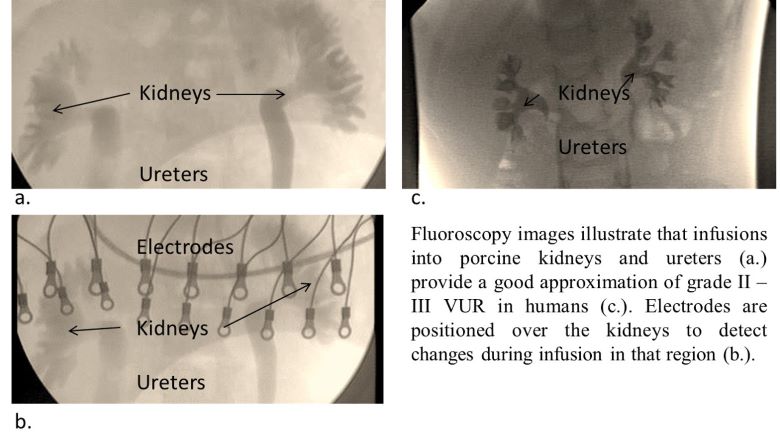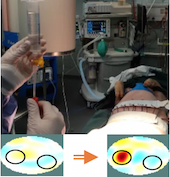
Vesicoureteral Reflux (VUR) is characterized by the backflow of urine from the bladder to the kidneys and is the most common congenital urinary tract abnormality in children. The condition predisposes children to urinary tract infections (UTIs) and kidney damage. Typically, VUR is assessed by fluoroscopic voiding cystourethrogram (VCUG), a procedure that requires catheterisation and uses ionizing radiation. The objective of this study was to evaluate the potential of Electrical Impedance Tomography (EIT) as a screening tool to detect VUR. In this study, EIT was used to detect retrograde infusion of saline into the kidney(s) of 4 pigs. Thirty-two fabric electrodes were placed equidistantly around the pig and centered over the kidneys along the longitudinal axis. To recreate VUR, a saline solution mimicking the electrical properties of urine was infused into the kidneys and EIT measurements were taken before, during and after infusion in order to detect the presence of the solution in the kidneys. Infusions were repeated several times in each kidney. In total, data from 116 experiments were processed and time-difference images were reconstructed. The results were determined through statistical analysis of the mean change in the voltage signals and EIT image pixel intensities during infusion. Unilateral infusion was successfully detected in 94.83% of all mean voltage signals and in over 98.28% of the reconstructed images. The images showed strong visual contrast between the region of interest and the background. In animal models, EIT has the capability to detect infusion into the kidneys with high accuracy. The results show promise for EIT to be used for screening of VUR in children.

